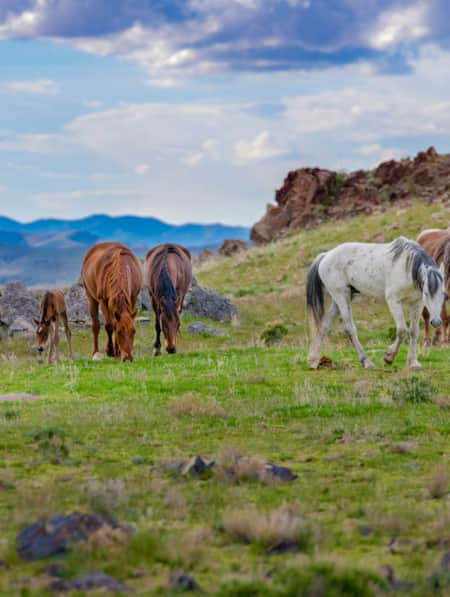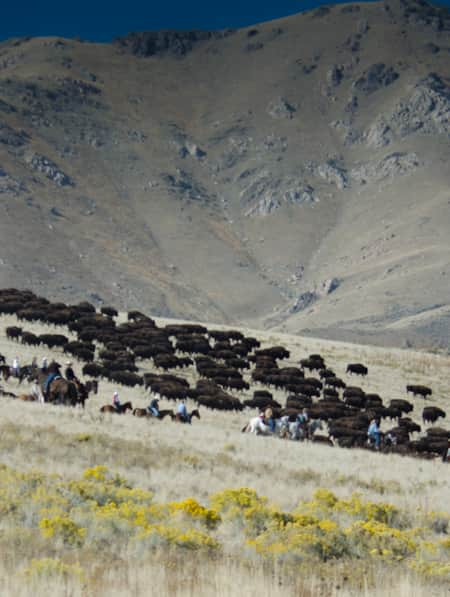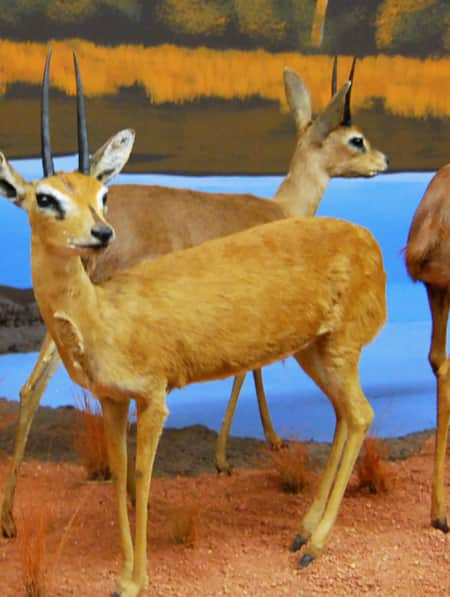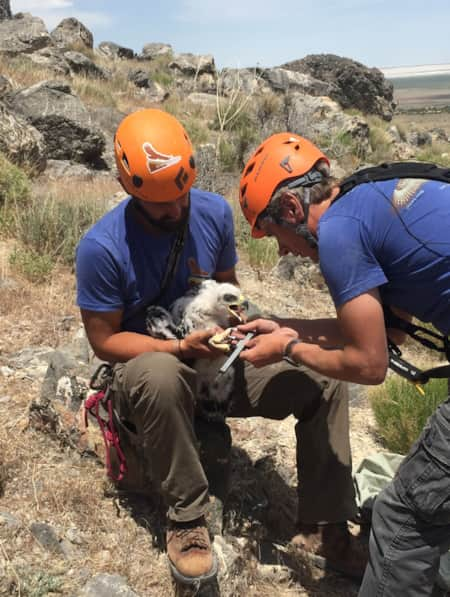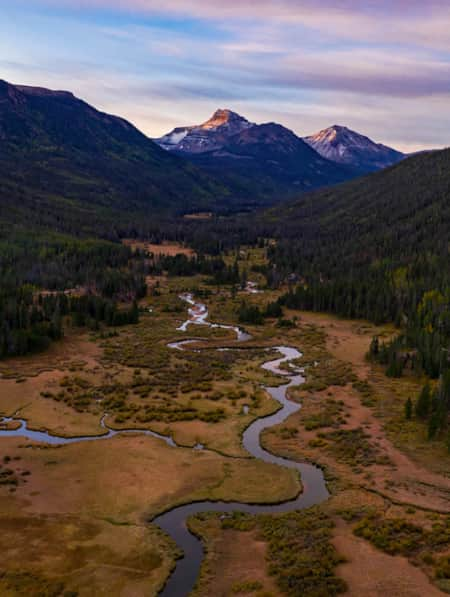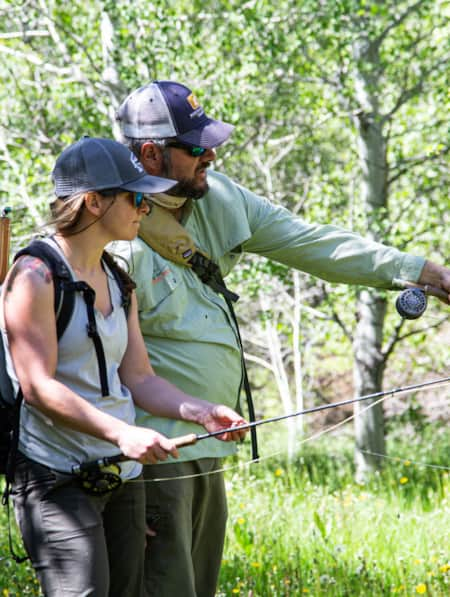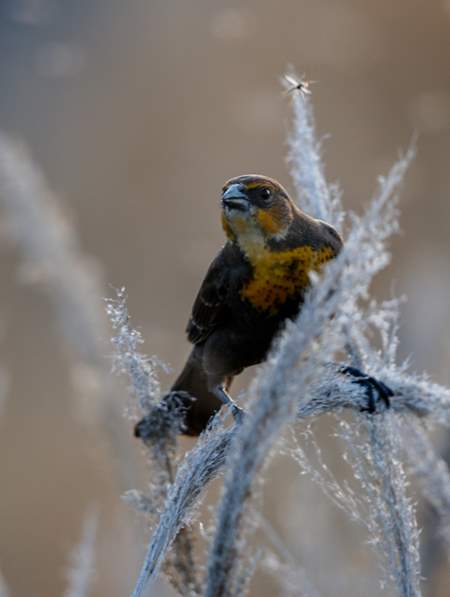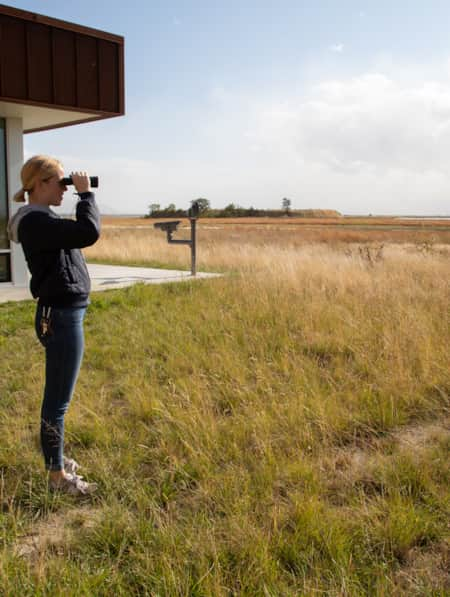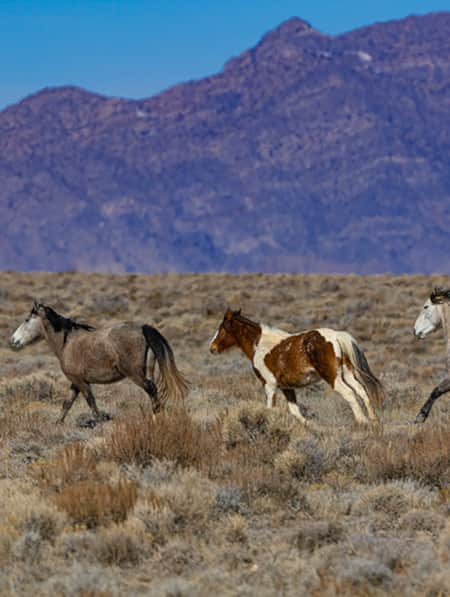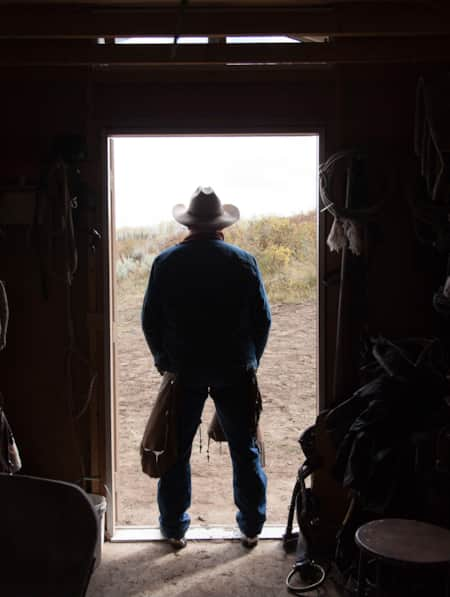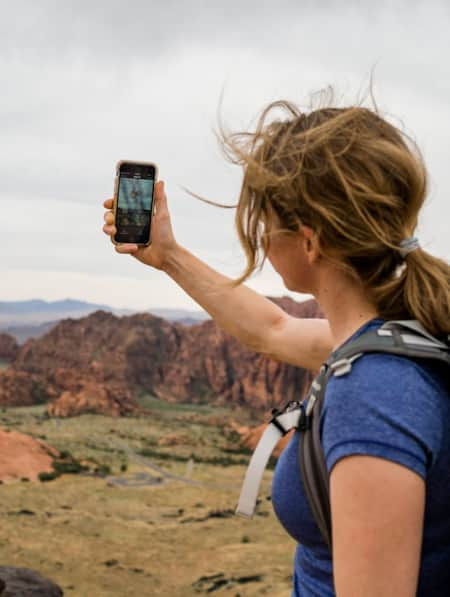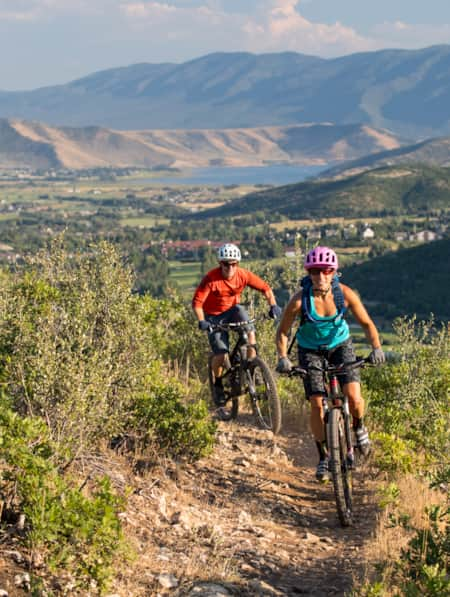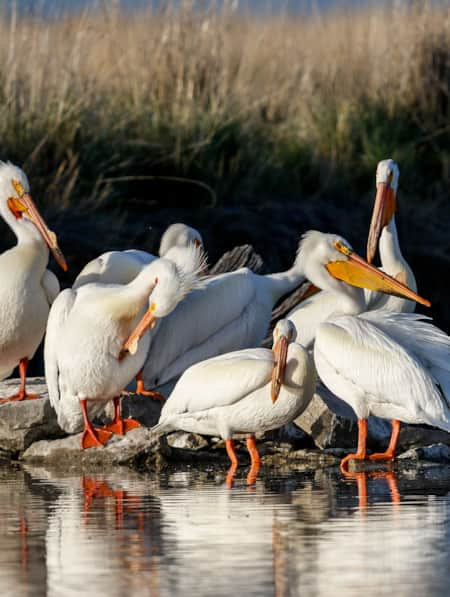- Home
- Things To Do
- Nature and Wildlife
- Rattlesnakes in Utah
Rattlesnakes In Utah
Rattlesnakes are a part of the hiking, camping and mountain biking experience in Utah. While it’s fair to be a little nervous about this, don’t let it stop you from getting outside. Like many ‘scary’ creatures, rattlesnakes are more afraid of us than we are of them. If you’re going to recreate in Utah's outdoors, educate yourself about rattlesnakes ahead of time.
Rattlesnake Safety
If you hear a rattlesnake, don’t panic. The sound is simply the snake’s defense mechanism against predators. Calmly try to identify where the sound is coming from so you don’t accidentally harm the snake.
Always stay at least five feet away from a snake, so it has adequate space. Once you know where the rattlesnake is, carry on. Remember, rattlesnakes don’t want to interact with you, so if you remain calm and respect their boundaries, they won’t bother you.
Simple Tips to Stay Safe:
- Always stay on paths
- Keep an eye on children (Read: Tips for Family Friendly Adventure)
- Keep dogs on leashes
- Wear boots and use trekking poles
- Choose wide, popular trails
- Never approach snakes
Types of Rattlesnakes
There are seven subspecies of rattlesnake found throughout Utah: the sidewinder, Mojave rattlesnake, speckled rattlesnake, Northern Pacific rattlesnake, Hopi rattlesnake, midget faded rattlesnake and, the most common, the Great Basin rattlesnake.
Responsible Travel Tip
Rattlesnakes are protected under Utah law. They help keep the state rodent population under control, which is essential to its ecosystem. It is illegal to kill, harm, or harass a rattlesnake unless actively threatened. Doing so will lead to a class B misdemeanor.
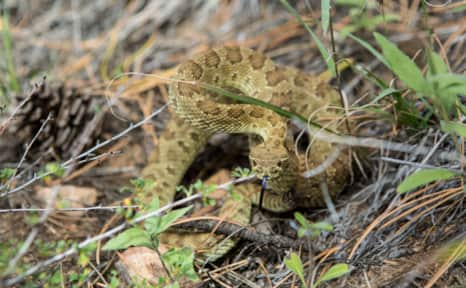
Rattlesnakes are most active in the summer at dawn and at dusk, but you should be prepared to encounter them at all hours.
Photo: Andrew Burr
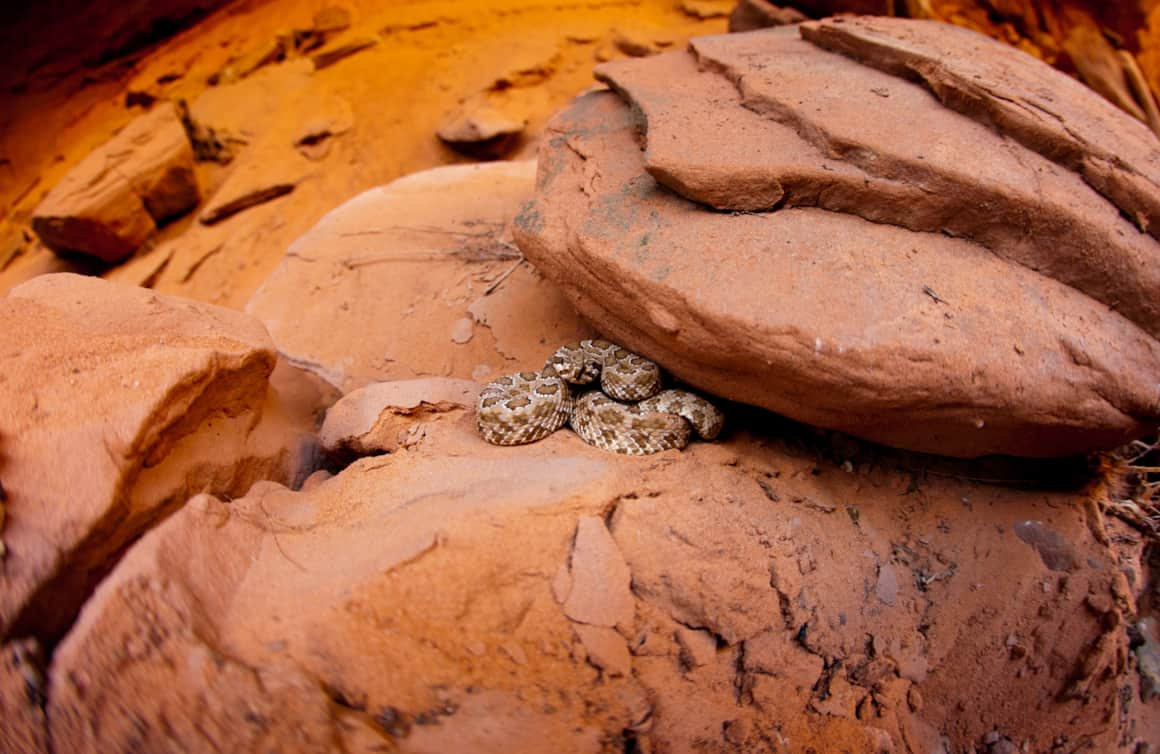
A rattlesnake's camouflage can really help it blend into its surroundings, so be sure to keep a keen eye on the trail ahead.
Photo: Andrew Burr
Rattlesnake Bites
It is extremely rare for a rattlesnake to bite a human. Striking is usually the snake’s last resort of defense. However, it’s always good to be prepared for any scenario when enjoying the great outdoors.
The symptoms of a rattlesnake bite include:
- Numbness in the face or limbs
- Lightheadedness/weakness
- Nausea/vomiting
- Sweating/salivating
- Blurred vision
- Difficulty breathing
If a rattlesnake bites you or someone you’re traveling with, you should seek medical assistance as soon as possible. Call an ambulance as soon as you’re able to.
Do's And Don'ts For Rattlesnake Bites
Do:
While you wait for emergency medical assistance, here’s what you can do to minimize the bite’s risk.
- Keep as still as possible since movement increases blood flow and the circulation of the venom.
- Remove tight clothing or jewelry before swelling happens.
- Allow the wound to bleed and release some of the venom.
- Place a clean bandage on the wound.
- Remain calm to keep heart rate steady.
- Keep warm to help with shock symptoms.
Do Not:
Make sure to avoid the following in any instance of a rattlesnake bite.
- Raise the affected area above heart level. Doing this will allow the blood with rattlesnake venom to reach your heart quickly.
- Wash the wound. The venom can be used to identify the correct antivenin.
- Suck the venom from the injury. This will introduce the toxin to the mouth and introduce the snake bite to mouth bacteria.
- Use a tourniquet or apply ice or water.
- Cut the wound. This can just lead to infection.
Wild Aware Utah
Founded by Utah's Hogle Zoo in 2009, the Utah Division of Wildlife Resources (DWR), Wildlife Protection Society (WPS), and Utah State University (USU) have partnered to develop tools to educate individuals and communities about how to live, work, and recreate safely in Utah wildlife habitats.
Discover More Utah Wildlife
-

5 Best Ways to View Wild Horses in Utah
Written By Matcha
4 minute read
There are plenty of opportunities for viewing wild horses in Utah. Here are five things you need to do and plan on to increase the likelihood you will spot these majestic creatures and get the most of your adventure.
-

Antelope Island's Bison Roundup
Written By Charles Freeman and Neil Werenskiold
7 minute read
The annual roundup is just one reason to visit this state park in the Great Salt Lake.
-

Bryce Wildlife Adventure Museum
Explore wildlife near Bryce Canyon at the Bryce Wildlife Adventure Museum.
-

Great Salt Lake Needs Your Visit
Written By Larisa Bowen
8 minute read
While you visit this mysterious natural wonder, you can also help save it.
-

How a Window View Led to a Career as a Raptor Biologist
Written By Brett Prettyman
7 minute read
Hawkwatch’s Steve Slater rappels or climbs into bird nests — whatever it takes — as he studies the West Desert’s golden eagle population.
-

How to Visit Utah’s Most-Visited Forest
Written By Brett Prettyman
The Wasatch Front mountain range offers endless amounts of recreational activity. Learning how to visit responsibly will enhance your overall experience.
-

In Search of the Yellowstone Cutthroat
Written By Sandra Salvas
7 minute read
Fishing for what counts in Utah’s remote Raft River Mountains.
-

Q&A With the Bear River Migratory Bird Refuge Biologist
Written By Steve Gooch
-

Songbirds, Shorebirds and Migrating Birds, Oh My!
Written By Matcha
4 minute read
The Eccles Wildlife Education Center, sandwiched between Utah's Wasatch Mountains and the Great Salt Lake’s Antelope Island State Park, opened in 2018 and has become a bucket-list destination to see, study and photograph the state's diverse animals.
-

The Herds of the West Desert
Written By Matcha
3 minute read
Searching for wild mustangs amongst Utah’s rolling hills.
-

The Hunt for Tavaputs Ranch
Written By Darby Doyle
18 minute read
Spectacular skies, off-road adventures and abundant wildlife in remote central Utah at Tavaputs Ranch.
-

Use These Apps to Enhance Your Utah Travel
Written By Kristen Pope
Apps can help you identify wildlife, learn about the night sky, plan your trip, and more. Use these apps to help take your Utah trip to the next level.
-

Wild Heber: Close-to-Home Adventure
Written By Kristen Pope
8 minute read
Just 45 minutes from Salt Lake City, Heber Valley’s state parks and national forest lands offer a world of adventure. Hike, bike, camp, kayak, watch wildlife and reel in blue-ribbon trout while learning about nature and how to protect it.
-

Winging It
Written By Steve Gooch
7 minute read
There’s no better place to go birding in Utah than the Bear River Migratory Refuge. Learn more and start planning the ultimate nature getaway!
